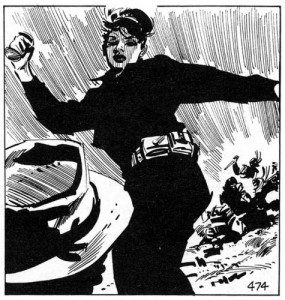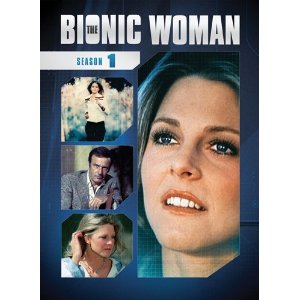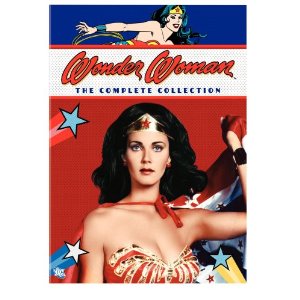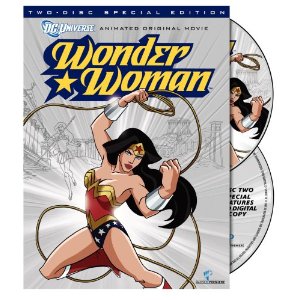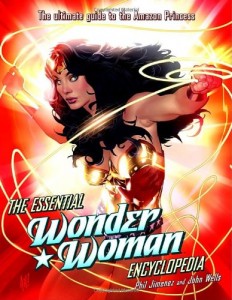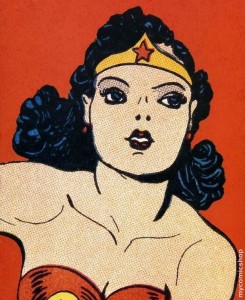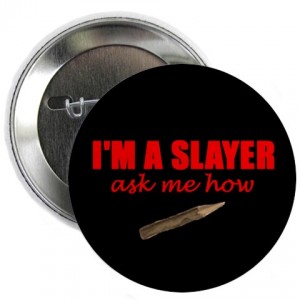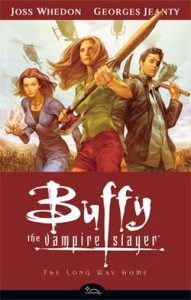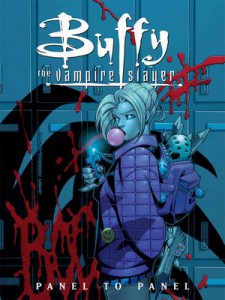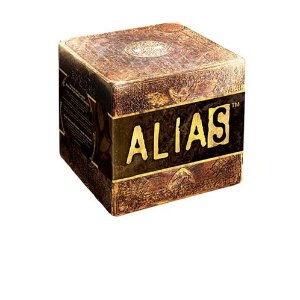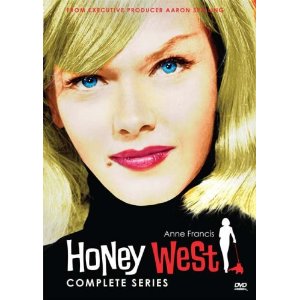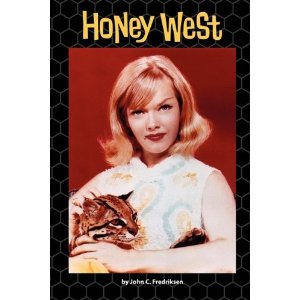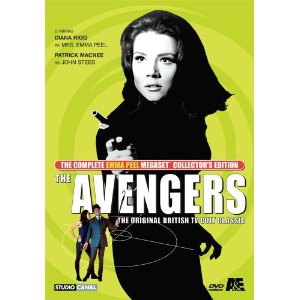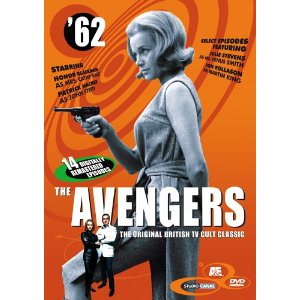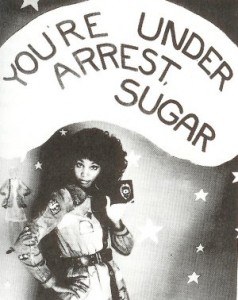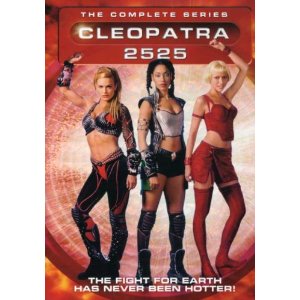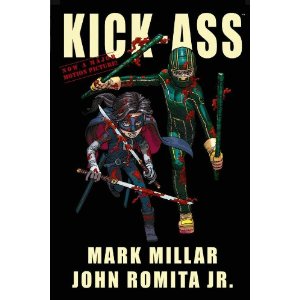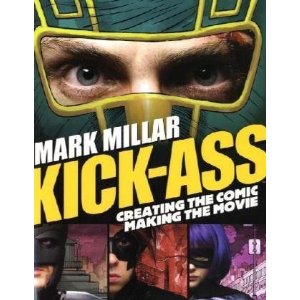The Ink-Stained Amazon’s Holiday Gift Guide For Geeks Day 11!
Jennifer K. Stuller on December 13, 2010 in Uncategorized 2 Comments »Day 11 of the gift guide is for the fan of female super and action heroes! It’s the Superwoman edition!
I’ve already gushed about my favorite superwoman, Modesty Blaise, on Day 1 of this gift guide.
So be sure to look there if your Superwoman Geek is a fan of British Spy-fi!
Jaime Sommers
Fans of Bionic Woman, Jaime Sommers, are in luck – The Bionic Woman has finally been released on DVD in the U.S.!
And for those wanting to know more about the show there’s Bionic Book Reconstructed – a history of both Bionic Woman and The Six Million Dollar Man. (With interviews!)
Wonder Woman
Anyone who knows me, or is familiar with my work, knows how influential Lynda Carter’s Wonder Woman was on me as a child and on the woman I’ve become.
For those that want to revisit their childhoods, pop culture research junkies like myself, and parents wanting to introduce their children to the Amazon Princess, Wonder Woman The Complete Collection is the perfect gift.
Wonder Woman: The Animated Feature is more for adults than children. (Get the 2-disc special edition for great features! )
The Essential Wonder Woman Encyclopedia by Phil Jimenez and John Wells (and which I reviewed for Bitch) is truly THE guide to the character.
Wonder Woman: The Complete History by Les Daniels is a well-researched and thorough history of the character. And while I don’t care for Daniels’ weird dislike of Gloria Steinem I would still recommend this book for Wonder Woman fans.
Buffy Summers
Buffy Summers is another of my personal favorites when it comes to Superwomen. Get me started talking about the emotional resonance and feminist message of Buffy the Vampire Slayer and I’ll never stop. I’ll also probably say things like, “I’m a Slayer. Ask me how.”
As mentioned in Day 5’s post, if your Geek doesn’t own Buffy the Vampire Slayer The Complete Series they’ll need it so they can participate in the upcoming Great Buffy Rewatch. Organized by Nikki Stafford and taking place on Tuesday nights throughout 2011, the rewatch will feature a variety of amazing contributors.
Buffy the Vampire Slayer Season 8 will get your Geek caught up in the world of Buffy and the Scoobies as they lead an army of Slayers against the latest Big Bad.
And Buffy the Vampire Slayer: Panel to Panel from Dark Horse will provide reference to all the non-canonical Buffy comics in a coffee table book format.
Sydney Bristow
I miss Sydney Bristow. From the very first episode of Alias I was hooked on this Superwoman and spy-fi shero. Your Geek can get hooked too, or just revisit the adventures of Sydney and her family of spies with Alias: The Complete Collection.
For context, reference, and those that can’t get enough of the show, its characters, and its mythology, Uncovering Alias: An Unofficial Guide to the Show and Alias Assumed: Sex, Lies And SD-6 make for great reading.
Honey West
Private eyeful Honey West debuted in 1957’s This Girl for Hire – a novel co-written by husband and wife team Gloria and Forrest Fickling under the pseudonym “G.G. Fickling.” In addition to the 10 novels Honey appeared in, she was the star of an eponymous television series in the mid-1960s. (I wrote about her for the Noir Issue of Bitch.)
Fans of Superwomen would enjoy Honey West: This Girl for Hire – the novel that introduces us to the busty blonde detective.
Honey West: The Complete Series – as one of the first American television series to star an action heroine is an absolute joy.
Honey West by John C. Fredriksen provides a guide to the series with episode synopses and interviews.
The Honey West Comic Book from Moonstone – the first two issues of which are written by the great Trina Robbins! (I interviewed Trina about the project here.)
Dr. Catherine Gale and Mrs. Emma Peel
Cathy and Mrs. Peel are two of the first action heroines of television period. Played by Honor Blackman and Diana Rigg respectfully, they were not only beautiful, stylish, and sexy, but smart, talented, fearless and perhaps more capable than their male colleague, John Steed.
Fans of Superwomen will love the The Avengers – The Complete Emma Peel Megaset as well as early episodes featuring Cathy.
Get Christie Love
Get Christie Love started out as a made-for-television movie loosely based on a novel called The Ledger, written by Dorothy Uhnak, who herself had worked with the NYPD. Teresa Graves (Laugh-In) starred as Christie Love – a sassy, skilled, take-no-shit, undercover cop.
Get Christie Love aired as a series during the 1974–5 season making Graves one of the first Black women to headline her own television show. Only the pilot is available on DVD.
The character was modeled after New York Police Detective, Olga Ford, one of the first African American women on the force. Ford served as a consultant on an early episode.
Varla
Tura Satana once said that “You can still be feminine and have balls” and those words describe her just as well as the famous line in Russ Meyer’s Faster, Pussycat! Kill! Kill! where her character, Varla, is told “You’re like a velvet glove cast in iron.”
With it’s brash delivery of one-liners, cinematography as stunning as the cleavage on display, and sexually confident, if amoral, women, Faster, Pussycat! Kill! Kill! is a classic film for the Superwoman Geek.
For more on Ms. Satana your Geek might enjoy Big Bosoms and Square Jaws: The Biography of Russ Meyer, King of the Sex Film by Jimmy McDonough.
Gina Torres (Or, the Gina Torres Collection.)
Okay, so Gina Torres is not a super or action hero per se – but she’s an Amazon Warrior nevertheless!
Guilty Pleasure? Feminist message? Exploitation? Let your Geek decide! I, for one love Cleopatra 2525 in all it’s awesome awfulness as well as the teamwork of Hel, Cleo and Sarge. And Torres sings the theme song.
Okay, every Geek already owns Firefly: The Complete Series and Serenity– but since they star Torres as the badass, Zoe Washburne, they need to be listed.
Superwomen Geeks can also catch Torres in Season Four of Angel – or you can go ahead and get the entire series.
Hit-Girl
One of the most fascinating Superwomen to come out of the past year is Chloë Grace Moretz’s Hit-Girl from Kick-Ass.
She was more than just a pint-sized, foul-mouthed assassin (and more than a gimmick). She was the most capable, talented, forceful, and driven person in both the movie version of Kick Ass and the comic book version of Kick Ass.
For more on both, Geeks will appreciate a copy of Kick-Ass: Creating the Comic, Making the Movie.
Recommended Reading for Superwomen Geeks: Criticism and History
Ink-Stained Amazons and Cinematic Warriors: Superwomen in Modern Mythology
Action Chicks: New Images of Tough Women in Popular Culture
The Modern Amazons : Warrior Women on Screen
Athena’s Daughters: Television’s New Women Warriors
Girls Who Bite Back: Witches, Mutants, Slayers and Freaks
A Very Short List of Recommended Reading for the fan of Superwomen in Comics
Birds of Prey Vols 1-7 by Gail Simone.
Wonder Woman: The Circle by Gail Simone.
Elektra & Wolverine: The Redeemer by Greg Rucka.
Queen & Country by Greg Rucka.
Batwoman: Elegy by Greg Rucka. (See Erica McGillivray’s lovely review from Day 9 of this list.)
Promethea by Alan Moore. (Find out more about Promethea here.)
GoGirl! by Trina Robbins and Anne Timmons.
Huntress: Year One by Ivory Madison.
